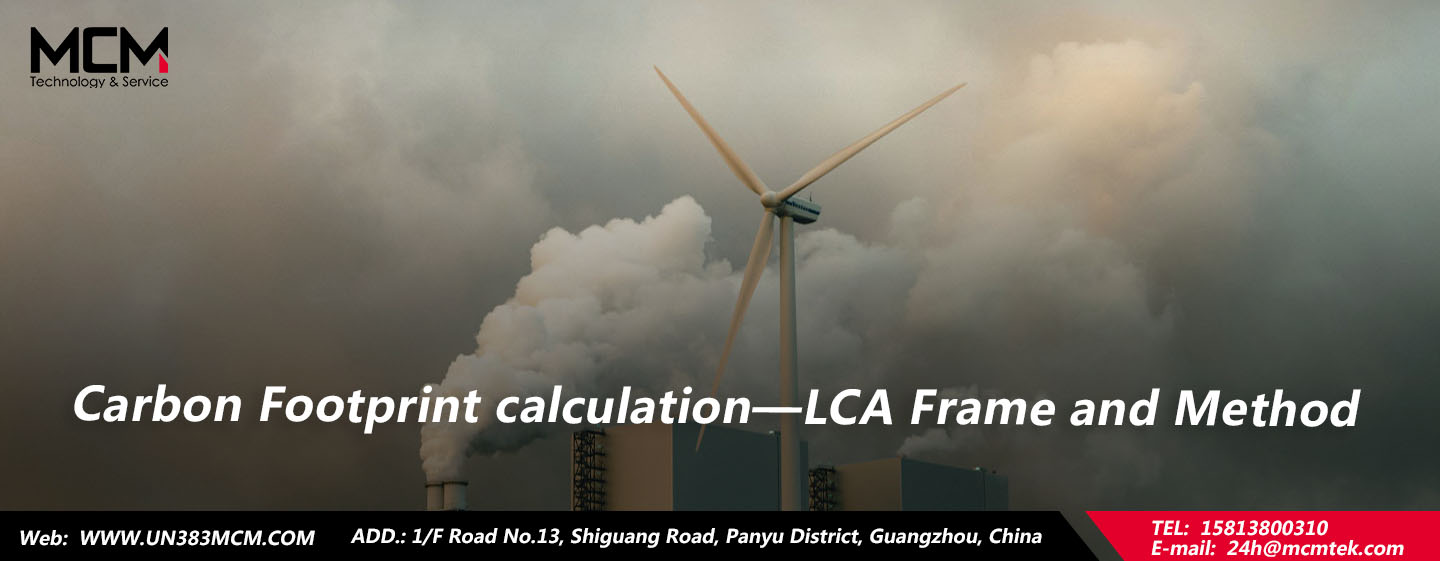Background
Life cycle assessment (LCA) is a tool to measure the consumption of energy source and environmental impact of a product, production craft. The tool will measure from raw material collection to production, transporting, usage, and eventually to final disposal. LCA is founded since 1970s.
l The Society of Environmental Toxicology and Chemistry (SETAC) defines SETAC as a method to assess how products, production and actions impact on environment by evaluate raw materials usage, energy consumption and waste release.
l In 1997, ISO issued ISO 14000 series, and defined LCA as the compilation and evaluation of the inputs, outputs and the potential environmental impacts of a product system throughout its life cycle. The environmental impact includes resources usage, human health and ecology. ISO 14040 defines the principal and framework, and ISO 14044 defines requirements and guidance.
LCA evaluation contains 4 phases:
1) goal and scope. This is about the purpose of research, the boundaries of the system, what unit is chosen to use, and the requirement on data.
2) Inventory analysis. This involves data collection and disposal.
3) Impact assessment. This is to analyze the elements that impact environment.
4) Interpretation. This is to conclude the assessment and analyze the result.
Goal and scope
Goal of study
The goal of study is the start point of LCA. This is to better evaluate the performance of a system, and it also helps to prove the environment friendly of a system so as to apply for green certification.
System boundaries
System boundaries should contain the following life cycle phases and relevant procedure (Below is the system boundaries of battery product)
|
Life cycle phases |
Relevant procedures |
|
Raw material obtaining and pre-treatment |
This includes active materials mining and other relevant procurement, pre-treatment and transportation. The procedure is included until production of battery unit (active material, separator, electrolyte, enclosure, active and passive battery components), electric or electronic components. |
|
Main production |
Assemble of cell, battery and electric or electronic components. |
|
Distribution |
Transporting to sales point. |
|
Life cycle end and recycle |
Collection, disassemble and recycle |
This is so called cradle-to-grave. Cradle means the start, which refers to obtain of raw materials. Grave means the end, which refers to scrapping and recycling.
Function unit
Function unit is the standard of calculation for input and output during lifecycle of a system. Normally there are two function units. One is mass (unit: kg), the other is electric energy (unit: kWh). If we adopt energy as unit, then this energy is defined as the total energy provided by a battery system in its life cycle. The total energy is calculated by multiplying cycle times and the energy of each cycle.
Data quality
In an LCA study, the quality of data impact on the result of LCA. Therefore we should give statement and explanation to the data we adopted during the study.
Inventory assessment
Life Cycle Inventory (LCI) is the base of LCA. We need to quantify resources needed for the lifecycle of the products, the consumption of energy, and the emission. Resources here include mining, processing, products selling, usage, transport, storage, scrapping and recycle, the whole lifecycle. The energy includes consumption of electricity, chemistry and solar energy. Emission includes pollution, heat and radiation.
(1) Establish a product system model based on system boundaries that are defined in goal and scope.
(2) Collect relevant data, like material in each procedure, energy consumption, transport, emission, and the upstream database.
(3) Calculate emission according to function unit.
Impact Assessment
Life cycle impact assessment (LCIA) is conducted based on inventory analysis. LCIA includes impact categories, parameter, characterize model, result categorize, category parameter calculation (characterize and standardize).
LCA impact assessment categories include:
- Abiotic resources consumption potential value and fossil fuel consumption potential value. The consumption of abiotic resources is relevant to ore refinement in a system input. The unit is kg Sb eq. The abiotic consumption of fossil fuel is related to heat value. The unit is MJ.
- Global warming value. Intergovernmental Panel on Climate Change (IPCC) developed a characterized model to calculate characterized factors. The characterized factors represent global warming potential for 100 years. The unit is kg CO 2 eq.
- Ozone sphere depletion potential value. This model is developed by Global Meteorological Organization. It defines the potential of ozone depletion of different gas. The unit is kg CFC-11 eq.
- Photochemical ozone. The unit is kg C2H2 eq.
- Acidification. It represents emission potential by measuring SO2 of each kilogram of emission. The unit is kg SO2 eq.
- Eutrophication. The unit is kg PO4 eq.
- Interpretation
- Interpretation is the last phase of LCA. Combining goal and scope, inventory analysis and impact assessment, we can have a comprehensive evaluation on a product, and find out the measurement to improve the production or lifecycle emission. For example, we can promote raw material production, change raw material selection, promote product processing, change energy type, optimize recycling equipment, etc.
Conclusion
- There are too many kinds of data involved in LCA. The quality and integrity of data will have great influence on result. If we can build up a data tracing platform, in which we can grab inventory like key components and production, and form a basic database of recycling, it will greatly lower the difficulty of carbon footprint certification.
- To decrease carbon emission, there are measures as follows: 1. Innovate battery material system to enhance energy density and cycle life. This will lower carbon emission. 2. Compared to lithium-ion battery, sodium-ion battery has lower influence on environment. 3. Solid battery has lower carbon emission than lithium-ion battery during production. 4. Recycling materials and re-production can also improve pollution and lower carbon emission.
Post time: Aug-04-2023


